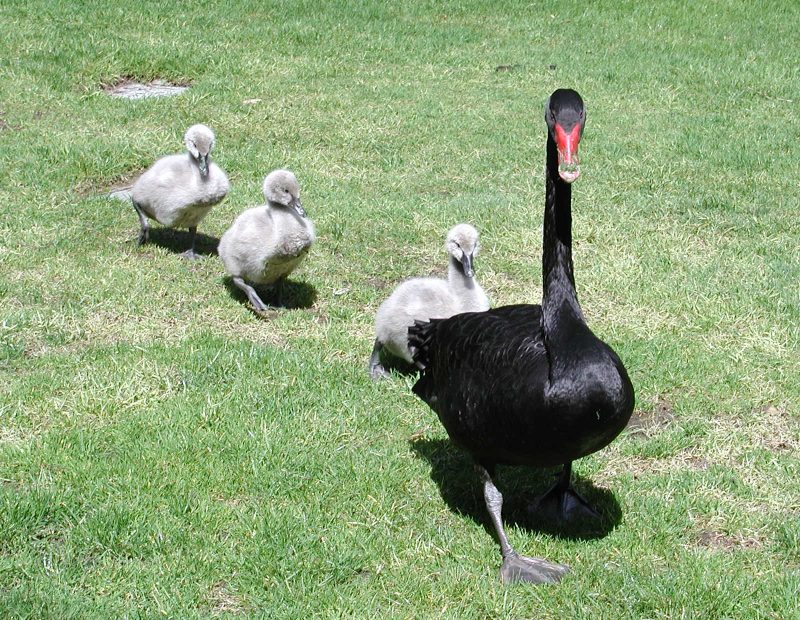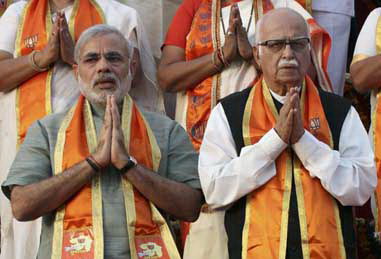Vivek Kaul
The Bhartiya Janata Party (BJP) disrupted the functioning of both the houses of Parliament yesterday (i.e. August 13, 2013). “Congress ka haath, damaad ke saath,” (hand of Congress is with the son-in-law),” chanted members of the BJP. The damaad they were referring to is Robert Vadra, son-in-law of Congress president Sonia Gandhi.
Kamal Nath, minister of parliamentary affairs, commenting on the issue said that Vadra’s alleged shenanigans were a state issue. “It is a state issue and parliament does not discuss state issues … if they (opposition) want to discuss, then Congress members will demand a debate on the mining scam in Karnataka and mining mafia in Madhya Pradesh. We must discuss issues of Gujarat,” he said.
This was an extremely lame duck defence. Sonia Gandhi, president of the Congress party, had written to the Prime Minister Manmohan Singh on the issue of the Uttar Pradesh government suspending IAS officer Durga Shakti Nagpal.
As a report in The Times of India points out “In a letter to Prime Minister Manmohan Singh, Gandhi said there is widespread concern that the suspended officer Durga Shakti Nagpal in the course of her public duties was seen to be standing up against vested interests engaging in illegal activity. It is reported that Nagpal has been hastily suspended for unsubstantiated reasons, she said. “We must ensure that the officer is not unfairly treated,” she told the Prime Minister.”
If one were to use Kamal Nath’s logic then Sonia Gandhi should not have written a letter to the Prime Minister on what is basically a “state” issue. If a national leader of the stature of Sonia Gandhi can write a letter to the Prime Minister on a state issue, why can’t the Parliament, which has many other national leaders, discuss a state issue?
Also, what is a national issue and what is a state issue? It is ultimately the states that constitute the nation. And if the son-in-law of the leader of the party that runs the government is accused of corruption, it is a national issue and a big cause for concern.
Several non Congress leaders have come out in the support of Sonia Gandhi, saying she can’t be held responsible for the actions of her son-in-law.
Mayawati, the President of the Bahujan Samaj Party (BSP) said “I would like to say if Sonia Gandhi is held responsible for it, our party does not agree with it. If someone does something wrong, his or her relations should not be punished. On the allegations against Robert Vadra, how can Sonia Gandhi be held responsible.”
A similar view was put forward by Samajwadi Party leader Naresh Aggarwal. “I don’t agree with the BJP’s slogan of ‘sarkari damaad’. We are not in agreement with the politicisation of the issue and dragging Sonia Gandhi in to the issue. I do not see how she can be held responsible for the whole issue,” said Aggarwal.
Sonia Gandhi cannot be held responsible for the activities of her “damaad”, maybe a valid point, but that does not mean that the Parliament should not be discussing the issue. Allow me to elaborate.
Robert Vadra’s Sky Light Hospitality Private Ltd bought 3.53 acres of land from Onkareshwar Properties run by one Satyanand Yajee. The sale was registered on February 12, 2008. Vadra’s Sky Light Hospitality paid the money by issuing a Corporation Bank cheque. Yajee’s Onkareshwar Properties did not encash the cheque immediately.
In the balance sheet of Sky Light Hospitality as on March 31, 2008, there is a book overdraft entry of Rs 7.944 crore. This includes Rs 7.5 crore that was to be paid for the 3.53 acres of land that was bought and around Rs 45 lakh for the stamp duty that was paid for registering the sale with the Haryana government.
A book overdraft is not an overdraft at a bank but essentially a record of cheques that have been issued by the company but not encashed minus its bank balance.
The balance sheet of Onkareshwar Properties showed a sundy debtors entry of Rs 7.95 crore on March 31, 2008. What this meant was that the company had not encashed the cheque issued by Vadra’s Sky Light Hospitality and at the same time also helped pay the stamp duty. It need not be said that if it had tried to encash the cheque, the cheque would have bounced. Sky Light Hospitality had a negative cash and bank balance of Rs 7.94 crore.
The question is why did Onkareshwar Properties go out of its way to help Sky Light Hospitality, on what was a purely commercial transaction. As I pointed out in this piece yesterday, Yajee is known to be very close to Bhupinder Singh Hooda, the chief minister of Haryana.
The Haryana government’s department of town and country planning issued a letter of intent to Vadra’s Sky Light Hospitality for grant of commercial colony license for 2.701 acres out of the total area of 3.53 acres, on March 28, 2008. This was done within a mere 18 days of application, IAS officer Ashok Khemka has pointed out in his 105 page reply to the report of the committee constituted by the Haryana state government (dated October 19, 2012) to inquire into the issues raised by Khemka when he was the director general of land records.
The rules and regulations required the government to check for the capacity of the applicant to develop a colony. Vadra’s Sky Light Hospitality had no previous experience of developing a colony. At the same time as on March 31, 2008, the company had a paid up capital of Rs 1 lakh. Paid up capital is the total amount of the company’s capital that is funded by its shareholders. How was a company with so little money expected to develop a colony?
Once the commercial colony license was in place, Vadra’s Sky Light Hospitality entered into into a collaboration agreement with with M/s DLF Retail Developers, on August 5, 2008. DLF as we know is the largest listed real estate company in the country.
After this Sky Light Hospitality received a huge amount of advance or interest free loan from DLF. The balance sheet of Sky Light Hospitality as on March 31, 2009, clearly points out entries of Rs 15 crore and Rs 10 crore as advances received from DLF.
Now as we can see everyone went out of their way to accommodate the business interests of Robert Vadra. Why was that the case? Not because Robert Vadra was a very promising entrepreneur and hence needed to be given all the help that the state government and the biggest real estate company in the country could give him. There are so many such entrepreneurs in the country who receive no help from the government.
To conclude, lets go back to something that happened a few months back. Pawan Kumar Bansal, the union railway minister, was made to resign after his nephew was caught by the Central Bureau of Investigation (CBI) while accepting a bribe of Rs 90 lakh, for organising a cash-for-jobs transfer of a senior railway board official Mahesh Kumar.
Bansal said after his resignation that “I welcome the CBI probe. I gave a statement right after the incident that I have nothing to do with this. Also, that I have no business relationship with my nephew. The truth will come out.”
Fair enough, even though it is difficult to believe that the nephew could have promised transfers without the minister knowing about it.
The basic point is that Caesar’s wife must be above suspicion. Or to put in simple English, the associates of public figures must not even be suspected of wrongdoing.
And if Bansal had to quit because of that, then the Parliament can at least have a discussion on the shenanigans of Robert Vadra.
The article originally appeared on www.firstpost.com on August 14, 2013
(Vivek Kaul is a writer. He tweets @kaul_vivek)




